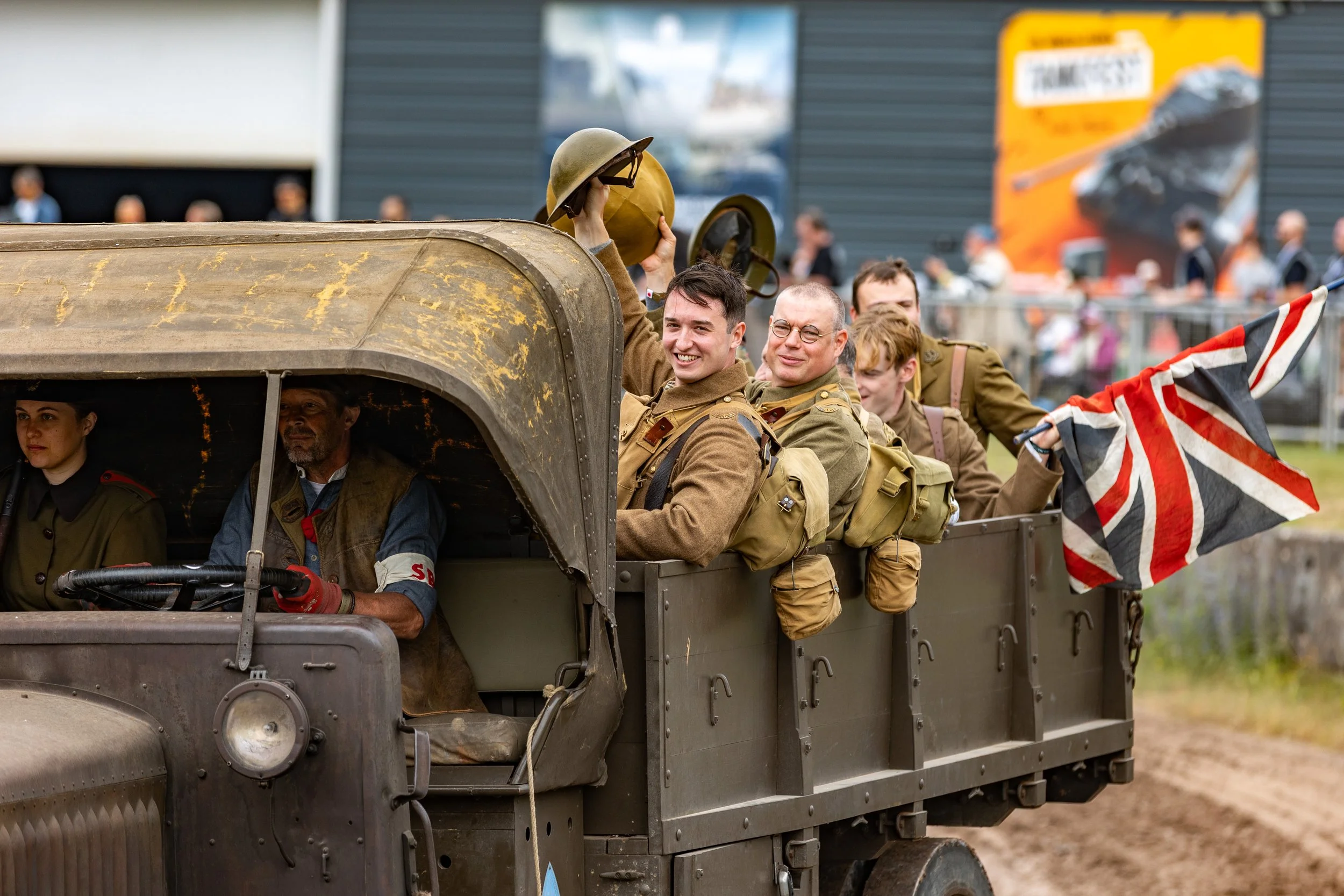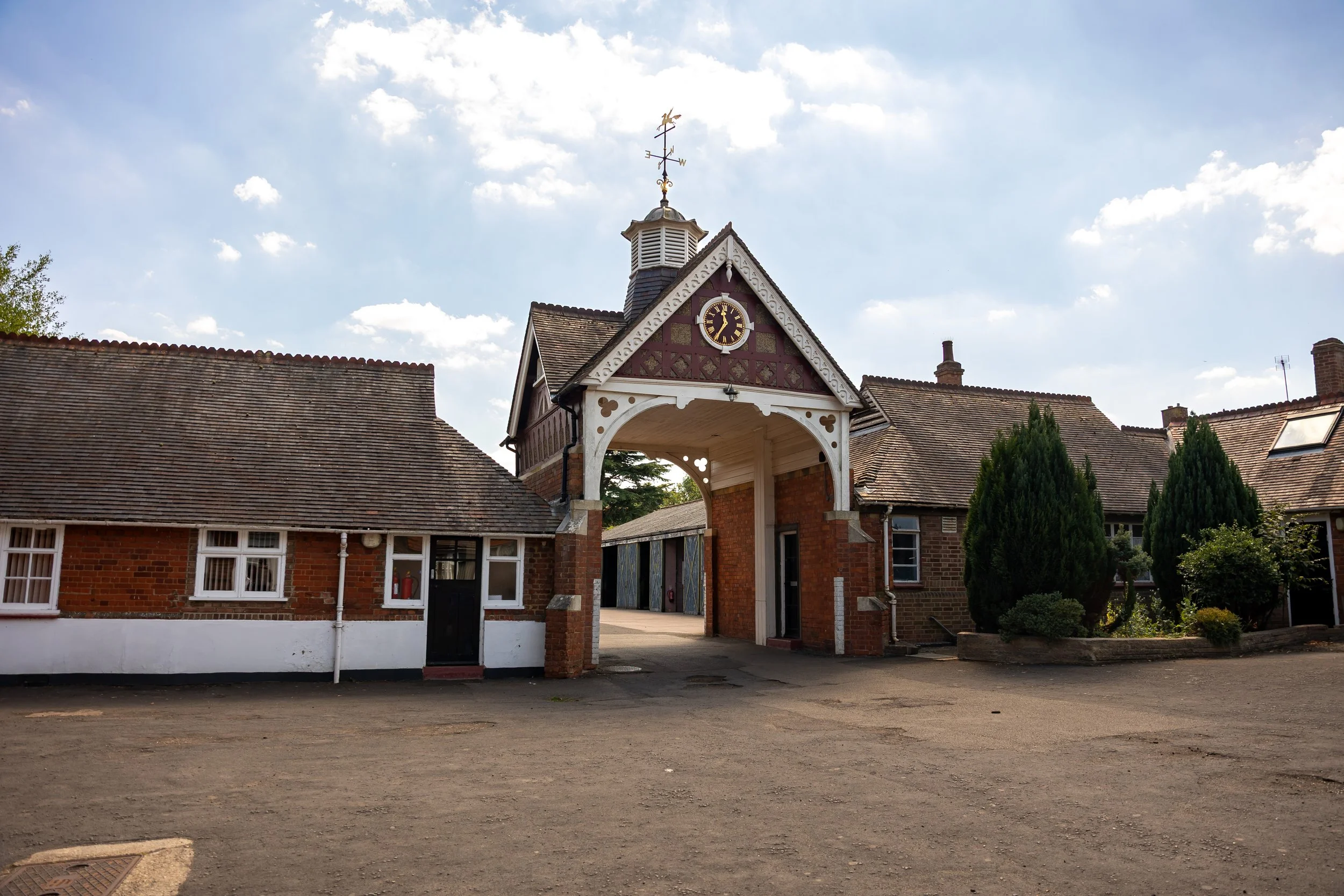A Brief British History - Bovington, Bletchley & the Second World War
A few years ago, I planted the seed for my mum and me to visit London—she would be celebrating a milestone birthday, I would be graduating from my master’s, and we could finally cross the Warner Bros Studio Tour off our Harry Potter bucket lists (which we did). When it got down to planning, everyone in my immediate family started to take interest, and when all the kids are going, Dad does it so we can all be together (but I know he enjoyed crossing the zebra at Abbey Road).
London is a massive city, and it was impossible to see and do it all in a 10-day trip. My family did our best to divide and conquer the sites we wanted to see, exchanging stories and photos when we returned to our flat in Chelsea at the end of each day. I never saw Buckingham Palace (my parents did and said it was underwhelming) and the Sherlock Holmes museum was not up to snuff (as I was told by the locals I met along my journey), but did my best to see and experience the sights and sounds that interested me most and would be worth the congested bus ride or an expensive black cab.
With some ancestry belonging to Britain, I couldn’t help but be drawn into its history, especially since I never got to ask my grandfather questions about his service in the British Army during World War II. Tankfest was also the first weekend I arrived in the country, so it makes sense to start there.
The Bovington Tank Museum
The Tank Museum in Bovington, Dorset, welcomes veterans, history buffs, military enthusiasts, educators, and reenactors to tell the public stories of tanks and the crews who served in them. Tankfest welcomed over 24,000 visitors across its three-day display, with this year’s headliner being the world’s only running King Tiger tank on loan from the Musée des Blindés in Saumar, France.

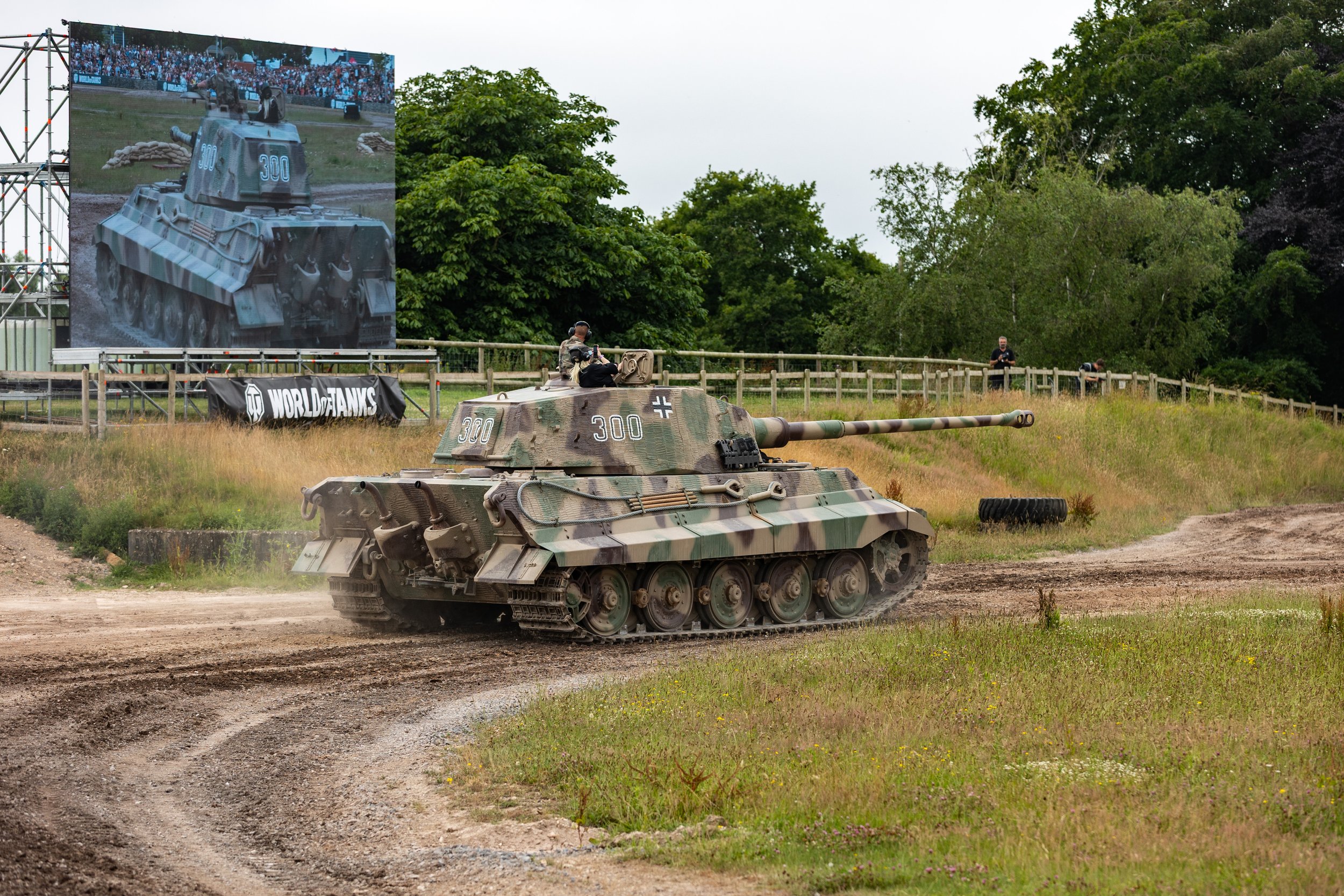


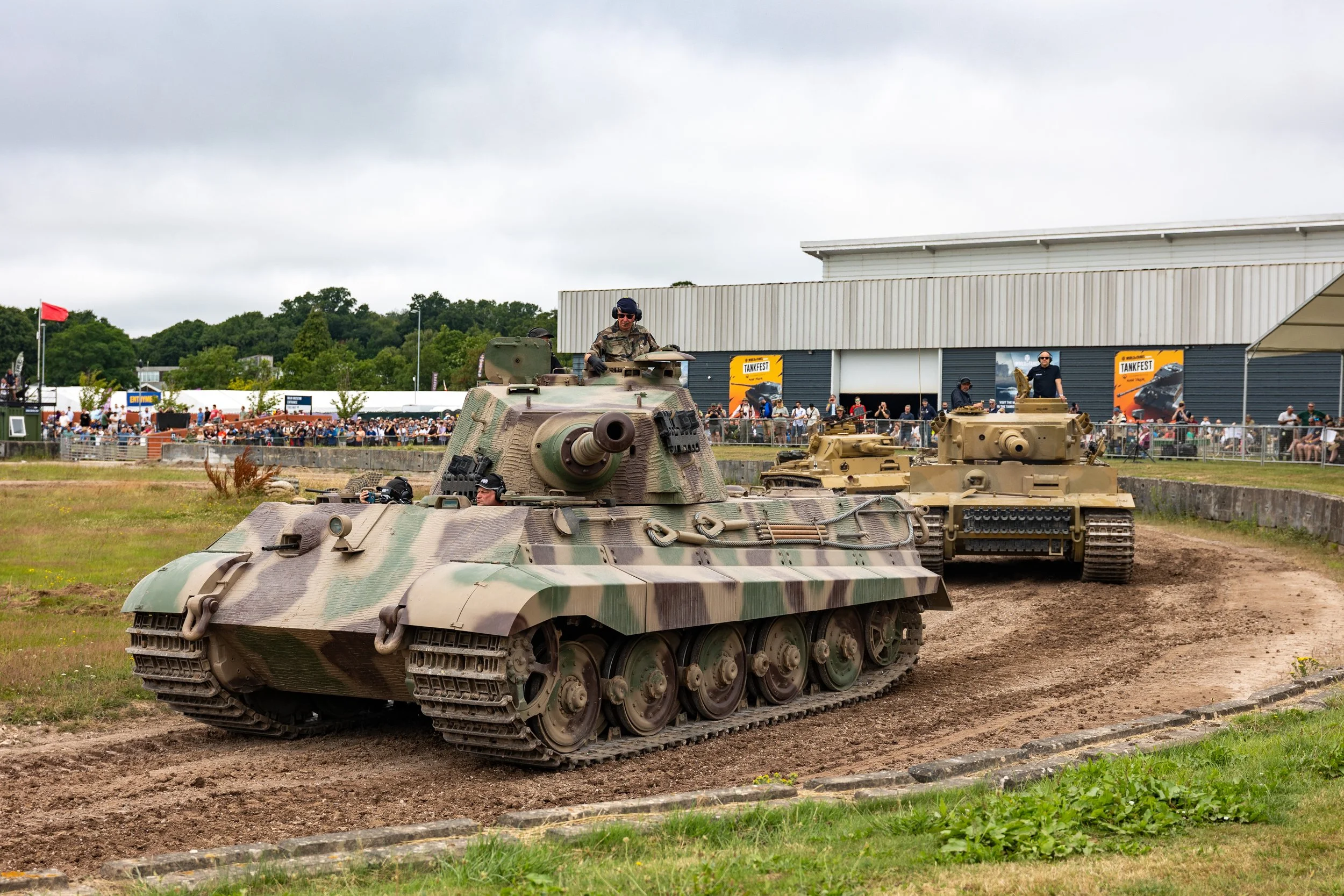
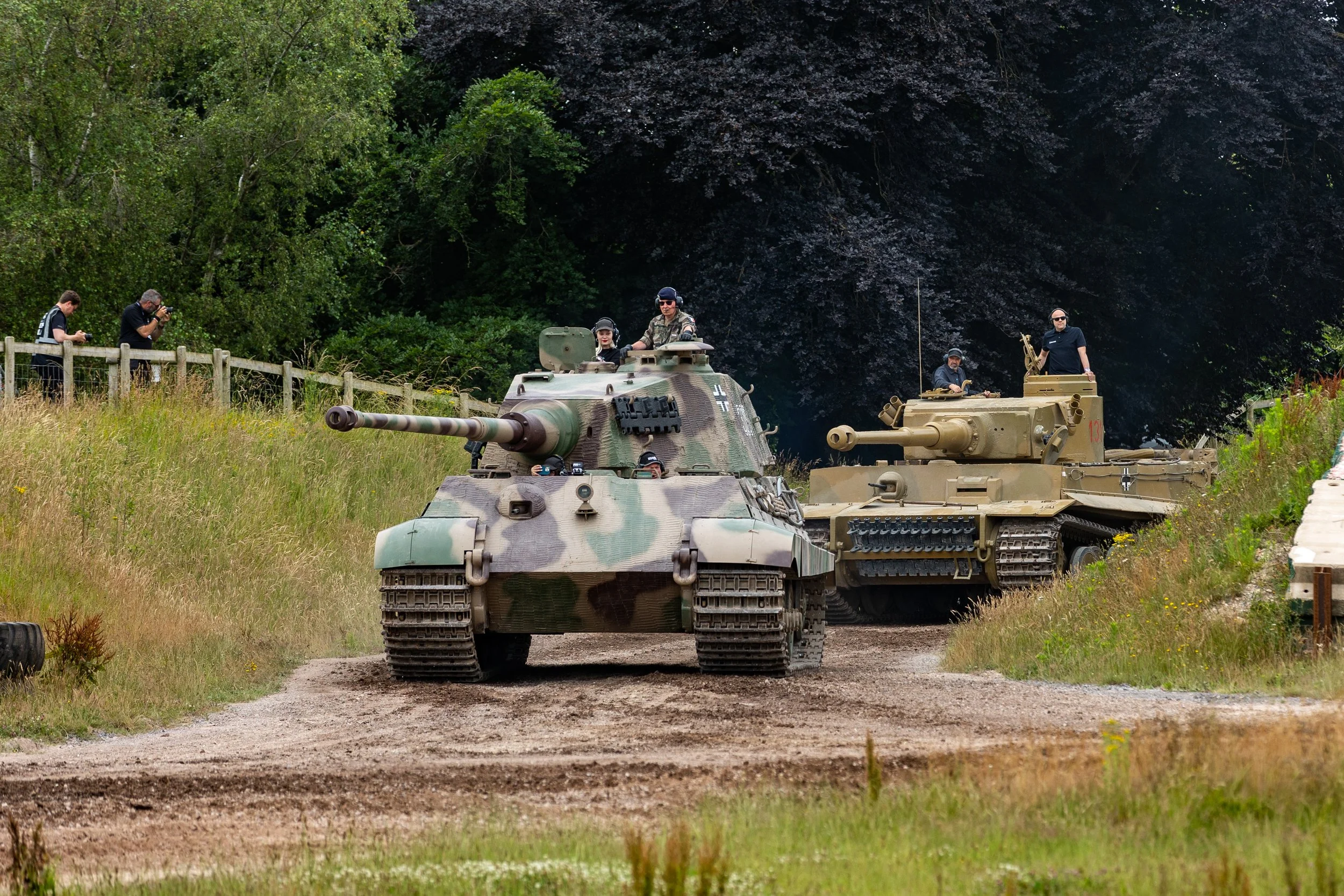
The King Tiger (Tiger II) is a German tank known for its combination of heavy armour and devastating firepower first used during the 1944 Normandy campaign. It was captured by the Allies at the end of World War II and has since been restored with parts from other Tiger tanks— only its turret and some mechanics are from the original vehicle.
The King Tiger’s performance was significant because it was the first time the United Kingdom saw this type of tank up close, rumbling across a mock battlefield. What’s more, it was showcased alongside the only remaining Tiger 131 (Tiger I), another German tank captured by the Allies in Tunisia in 1943, housed in Bovington’s Tank Museum.
It was the first time these tanks were reunited since their time in service, running alongside other notable machinery like the tank with the biggest gun (FV4005), the Allies’ most prolific tank (M4 Sherman), the German’s principal combat tank (Panzer III), and some of Britain’s best infantry support tanks (Matilda I and Matilda II) later outclassed by German firepower. This scale of event would not be possible without their leading sponsor, World of Tanks, the free-to-play online multiplayer video game where you can battle with these tanks virtually. Whether you are a tank fan or not, it’s a surreal experience to see the remainder of these working tanks traversing across a dusty arena for thousands of spectators to gawk.




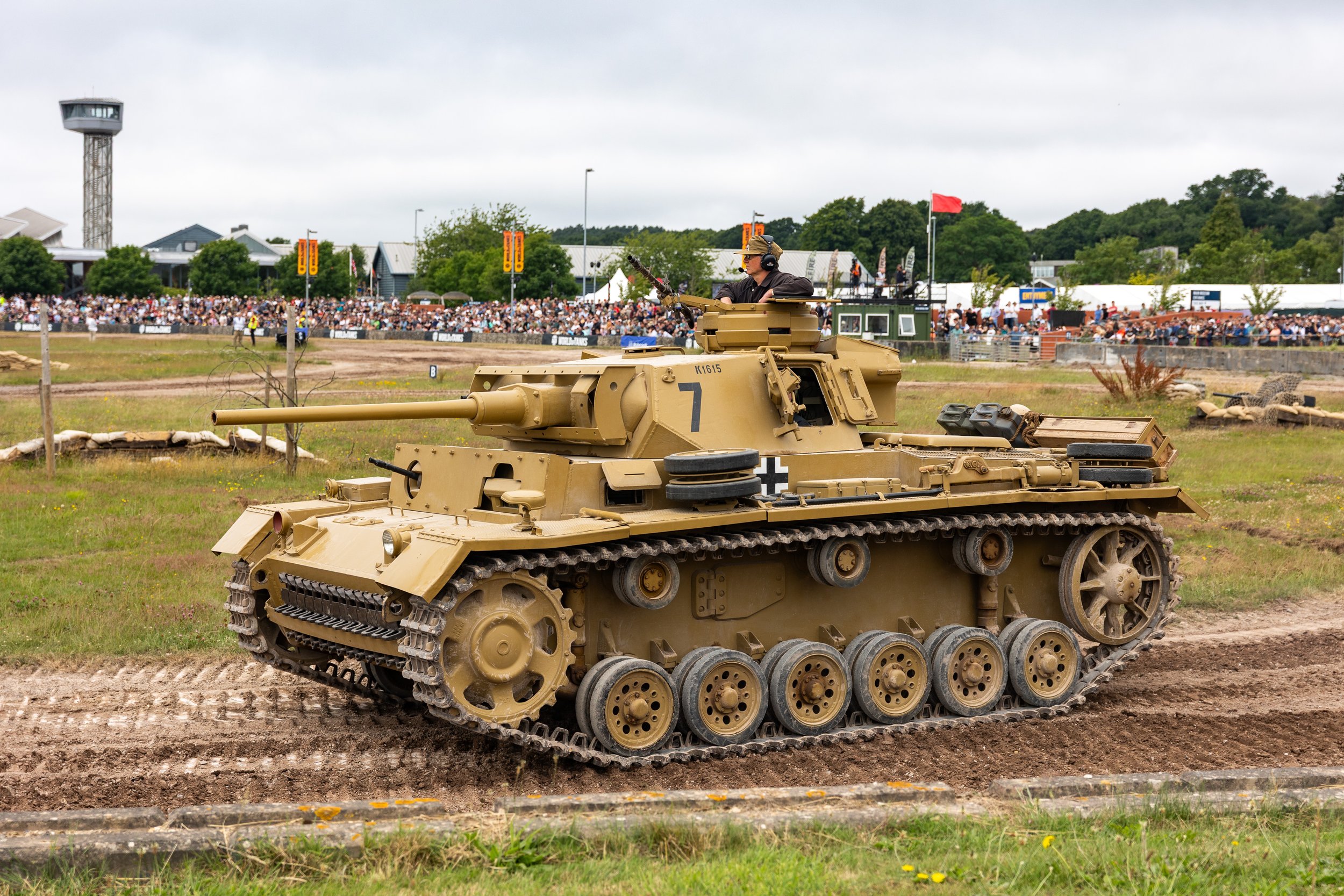






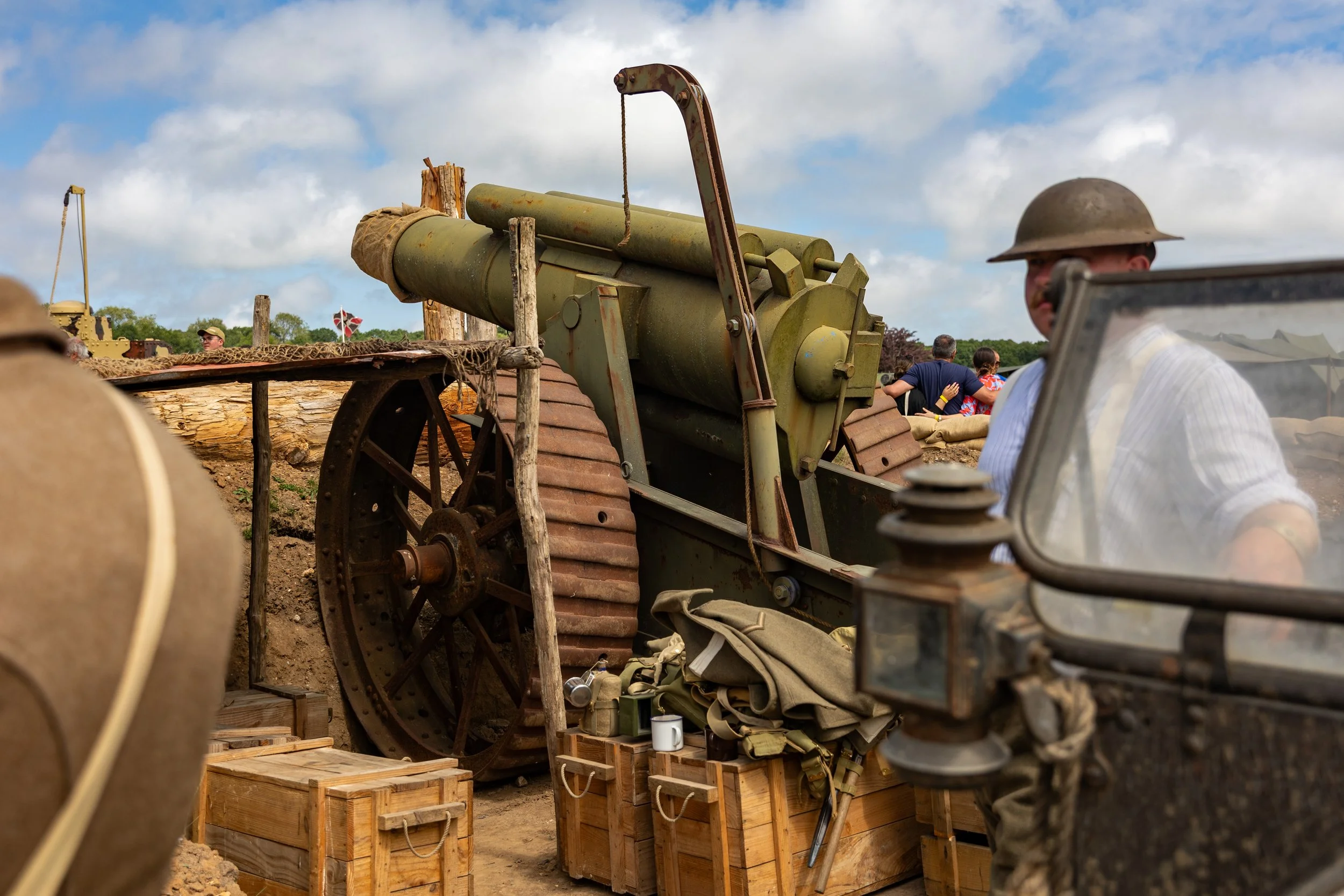



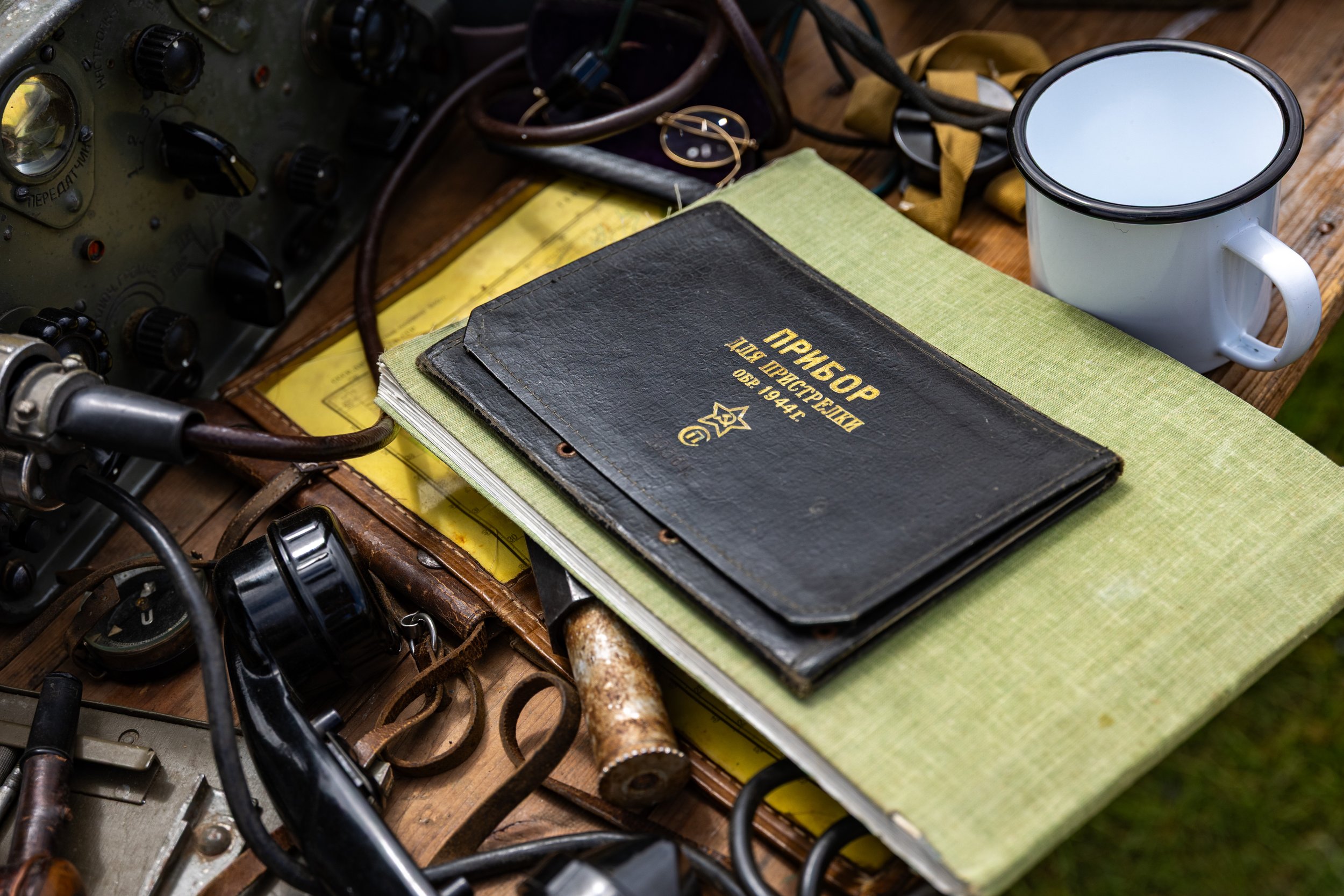

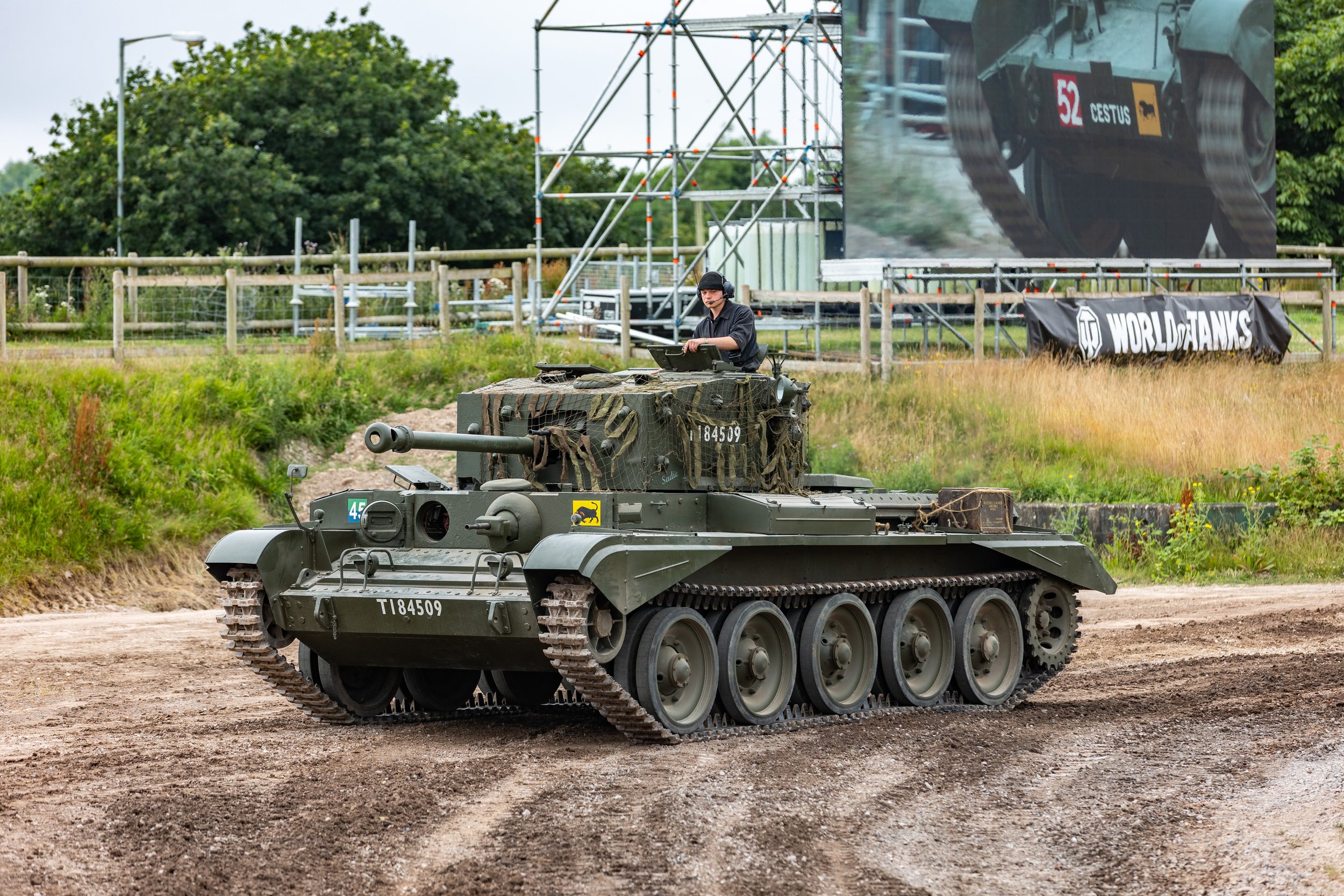
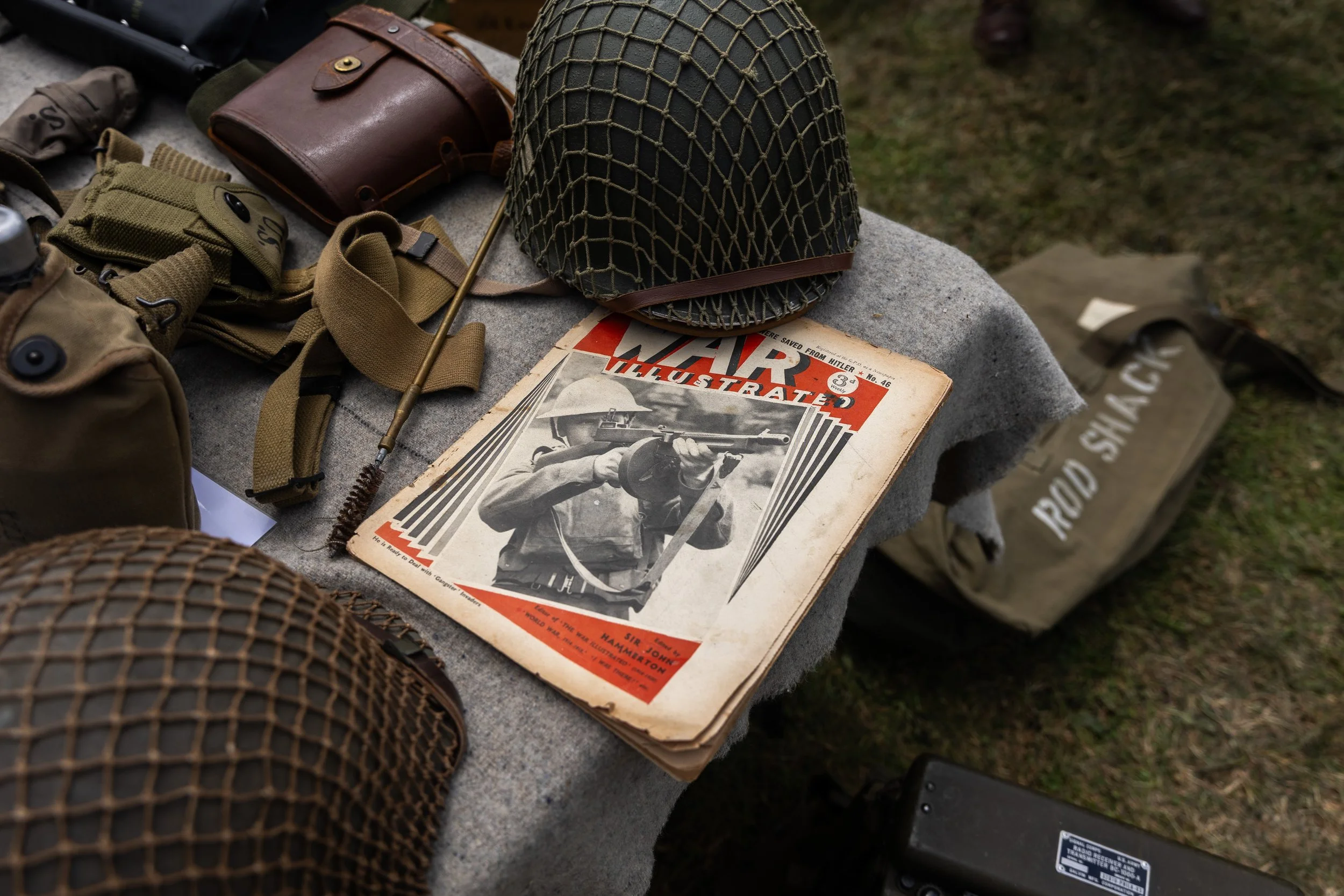


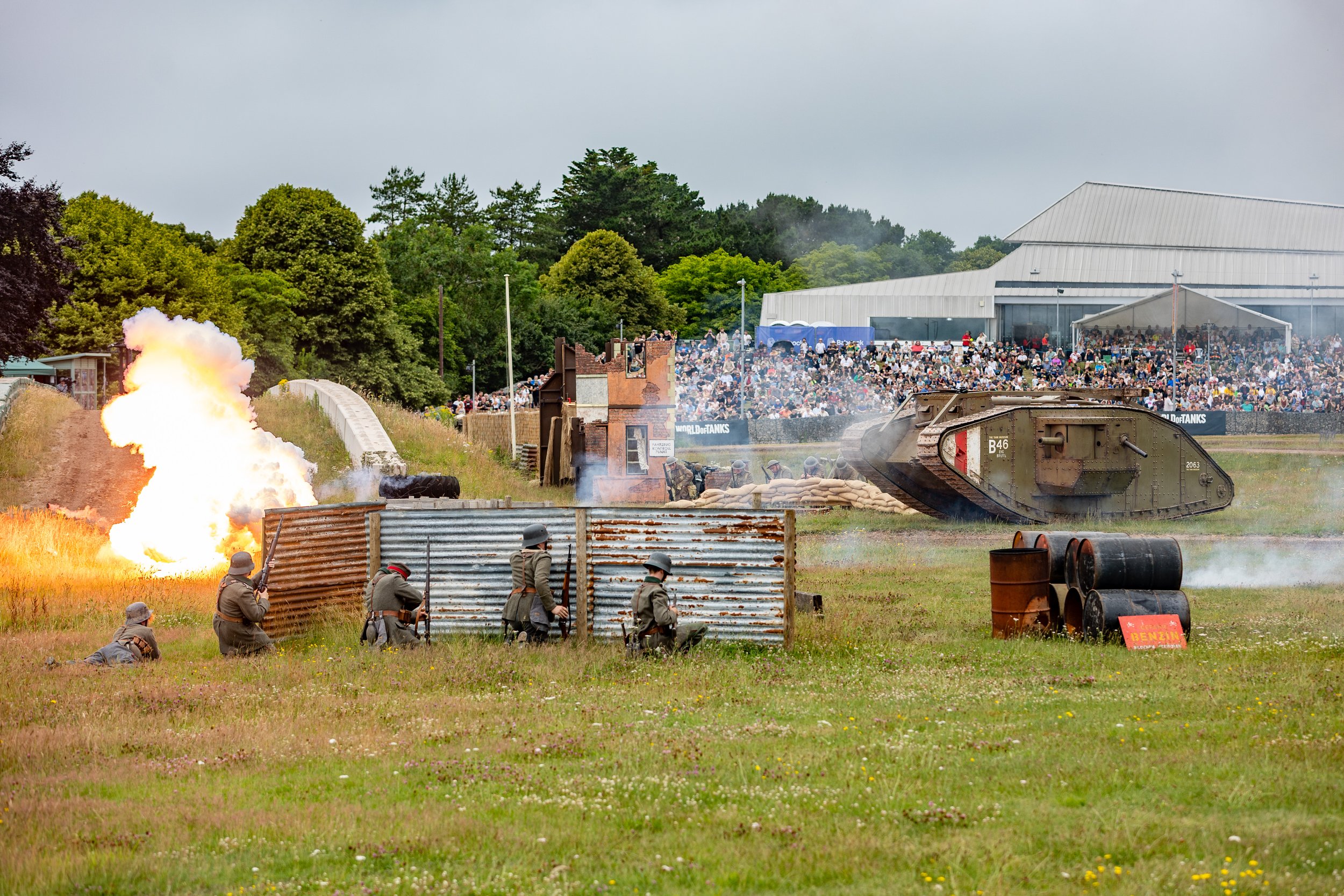
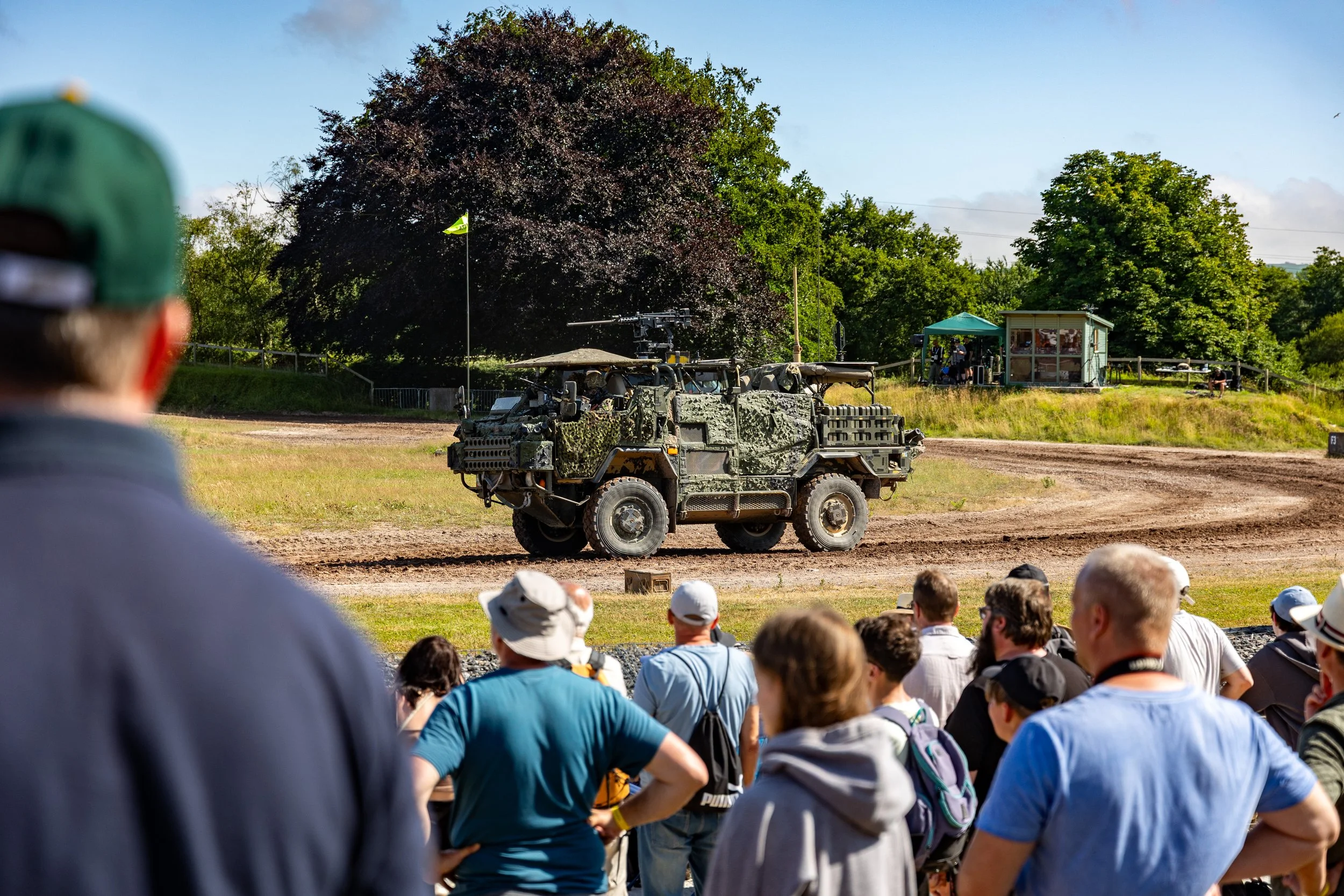
A big question to ask about events like Tankfest is why people attend - why do we support a sector of the world’s military when war is practically a plane ride away? For some, it’s in their own backyard.
Most of the vehicles showcased and housed at the Bovington Tank Museum haven’t seen combat since the Second World War, some being the few or final working tanks of their kind. Yet as the commentator introduced the final segment of the day, the British Army’s Royal Armoured Corps, you saw the types of armoured vehicles and technology rolling across Ukraine and Gaza by other militaries engaged in these battles today. As my sister helped point out, it’s a bit sanctimonious to safely spectate and glorify the history of military warfare while we grieve over today’s fighting.
Tankfest 2025 World War II battle re-enactment of Northwest Europe in 1945. (Marina Black Media)
It’s living history, educating the interested to remember a past we shouldn’t forget while feeling excitement and pride in our ancestors who sacrificed their lives, willingly or not, for us to be where we are now. That is not to say there weren’t military mishaps, immoral decisions, and that everything is perfect today because of yesterday. Rather, we can empathize with the past to help us understand our current reality—perhaps not my lived reality or yours, but someone else’s.
Aside from the handful of children decked out in army fatigues and carrying toy guns, it’s likely that a lot of people attend Tankfest out of interest in history and its technology. The introspection is probably not top of most people’s minds until you visit the museum’s exhibit on the current war in Ukraine, but I’m sure there are others afflicted by the moral anxiety of supporting a military charity when we claim to be anti-war or pacifist.
At the peak of the Vietnam War, John Lennon said, “violence begets violence,” and peace cannot be obtained with it. Some may counter that belief with the notion of suppressing a growing threat before you are the target, yet some of history’s tensest moments were resolved with intelligence and intercepting information before it was too late to talk things out.
Bletchley Park
Since the release of The Imitation Game (2014) and Benedict Cumberbatch’s portrayal of Alan Turing, Bletchley Park has received wider recognition among the general public for its accomplishments in codebreaking and ending the Second World War with intelligence operatives. It hosted some of history’s most brilliant minds and is touted as a militant, technological, and social revolution, while still holding its own dark secrets.
After Hitler invaded Poland on September 1, 1939, Bletchley Park officially opened as the Government Code and Cypher School, recruiting many of its talents from Oxford and Cambridge universities, which shared the same rail line. A Victorian manor house became home to the intelligence operation’s initial 200 staff, including codebreakers Alan Turing and Gordon Welchman, decryption interpreters like Francis Harry Hinsley, and language translators like Vera Jocelyn Bostock.
By the end of the war in 1945, over 8500 men and women worked at Bletchley Park—they were radio operators, dispatch riders, codebreakers and cryptologists, Typex operators, translators, and teachers to others who needed to learn on the job. As the operation grew, more mechanics, maintenance crews, cooks, and new administrative staff, like Hollerith operators, were also needed to keep the whole place running day and night. People were taught what they needed to know, how to do their job, when their breaks were, and few knew how the entire operation worked.
In World War II, the Germans were encrypting their messages with the Wehrmacht Enigma, which had five rotors, each being a letter in a code or cipher, requiring a specific order of letters to decipher the code and then its message. Enigma machines were first conceptualized after World War I as commercial tools to keep banking information, but became the Axis’ primary technology for message encryption in their military communications. As a result, the Allied governments prioritized intelligence operations like Bletchley to gain accurate information on their opposition to make more informed, strategic decisions, yet it was much easier said than done.
Under the constant surveillance of trained radio operators, many being civilians and amateur radio enthusiasts, enemy messages were listened to at wireless intercept stations (Y Stations). When one shift was over and another began, the record of messages from each operator on the shift would be packaged together and relayed to Bletchley Park, typically by bike. Each batch of messages had to be registered before being sent off to the codebreakers.
Codes and ciphers ranged in complexity, so did their operations. The Naval Section in Hut 4, for example, broke many low-level codes and ciphers that made considerable impacts. In May 1941, their intelligence helped prove the German battleship Bismarck was sent to disrupt Allied trade shipments in the North Atlantic. With the forewarning, the Allied armada prepared to meet Bismarck on its first and only operational mission.
In Huts 6 and 8, the task was to find the settings used by the Enigma machines that had enciphered these messages. With the Enigma key, the messages could easily be decoded on British Type-X cipher machines and produce the original text, typically in German, Italian or Japanese, requiring it to be sent for translation in Hut 3. With the full message deciphered and transcribed to English, it would be sent to the appropriate commander by dispatch rider or teleprinter if they were within the country, and overseas with enciphered radio messages.
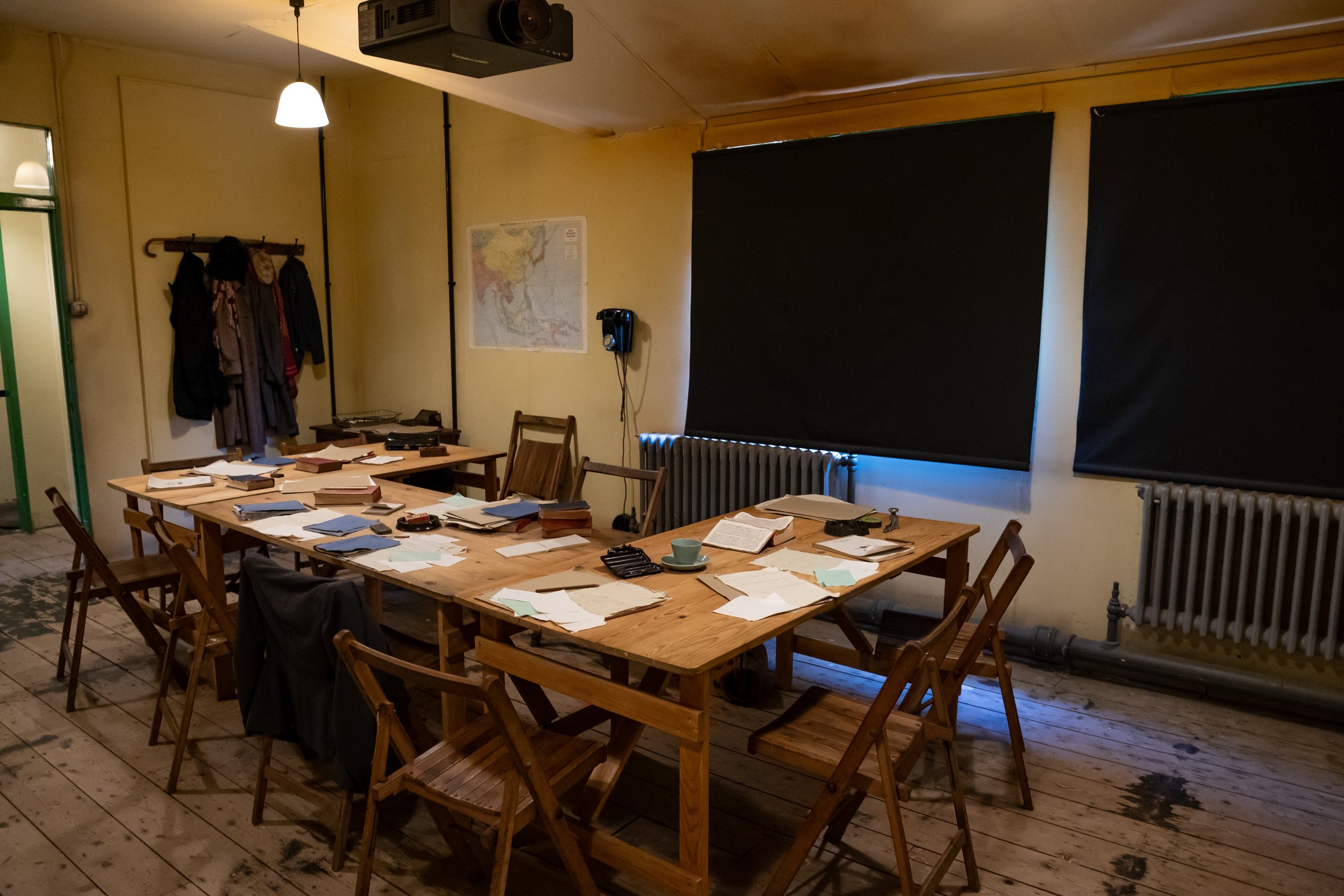

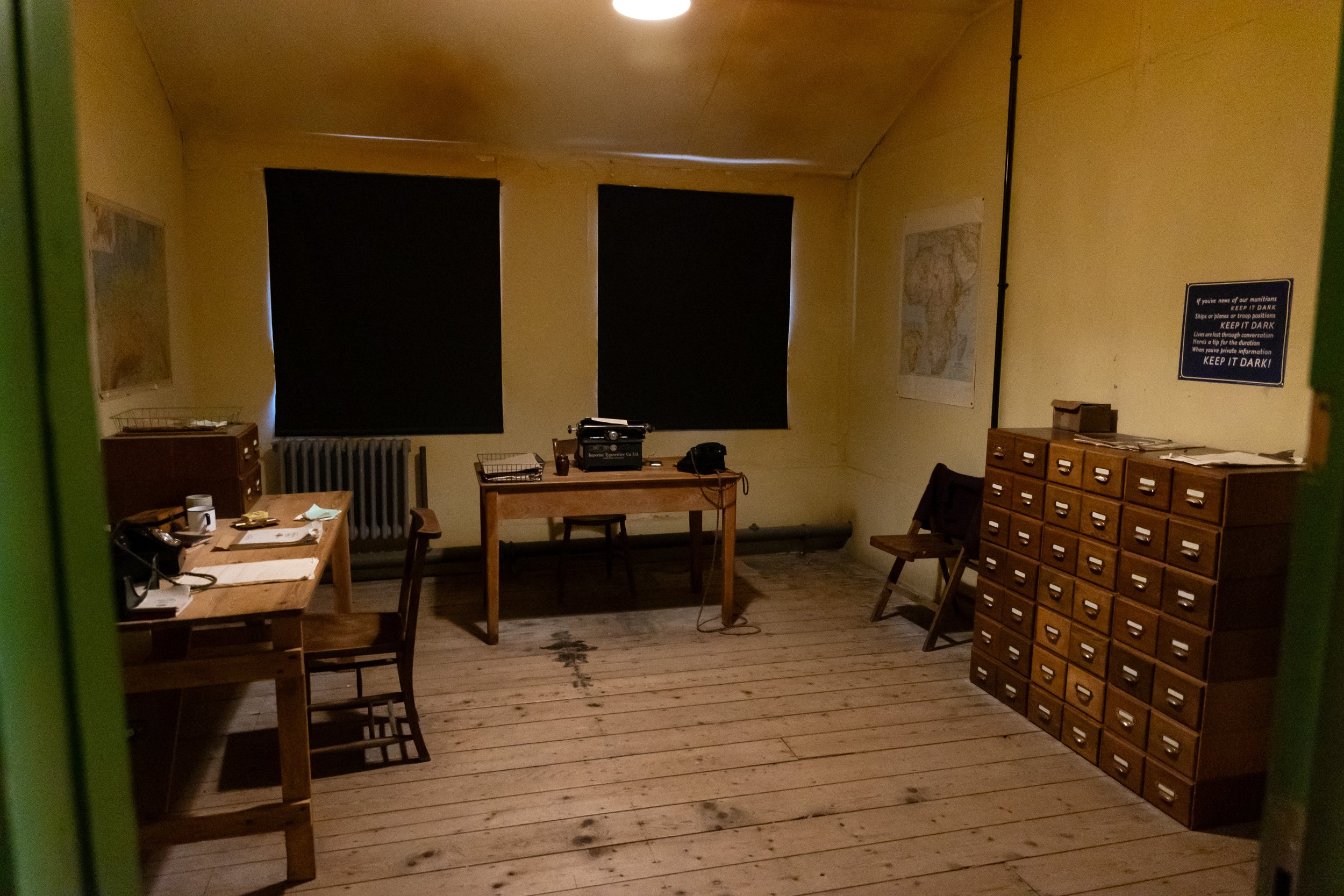




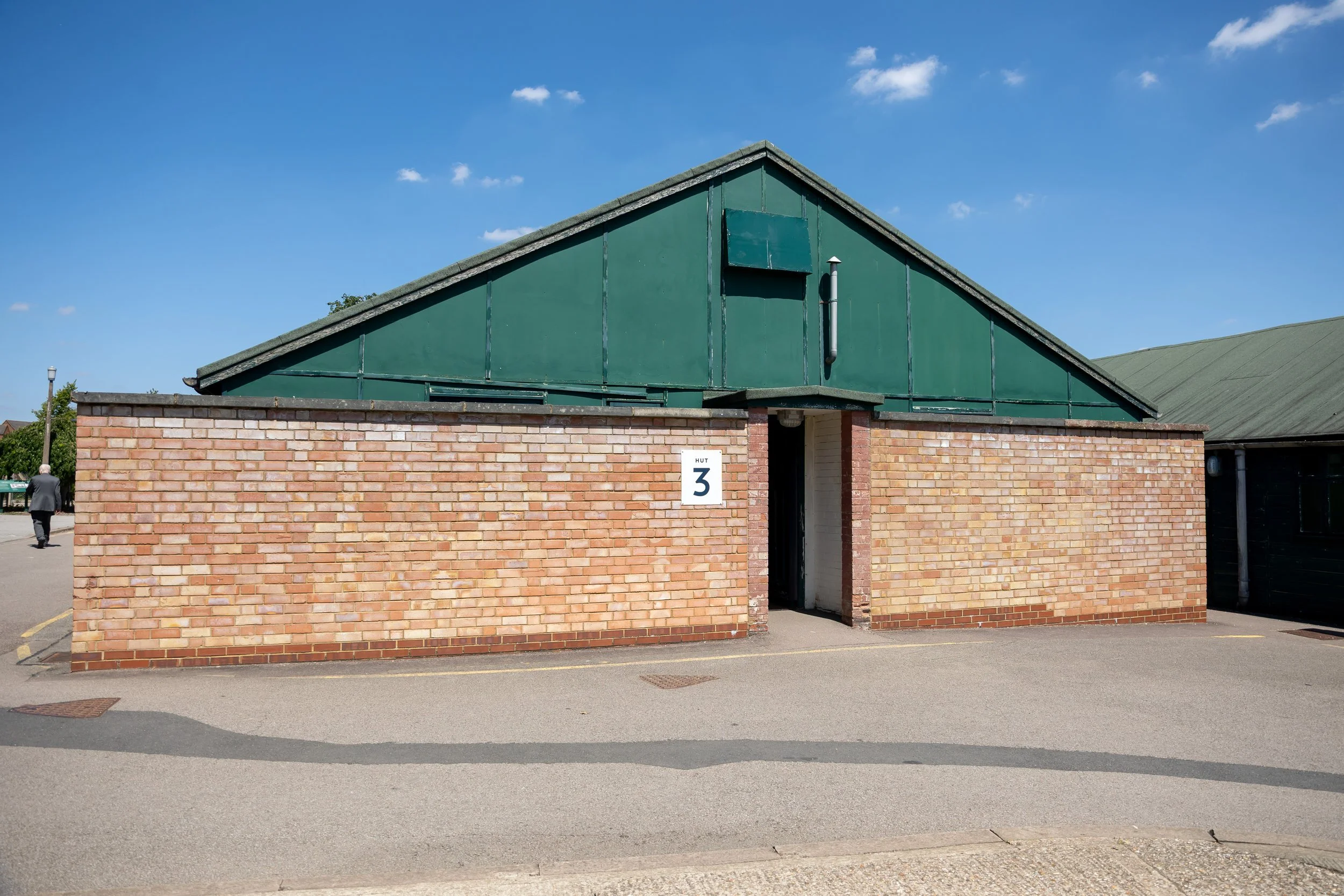
It was a laborious operation, especially as the Germans changed their cipher key daily at midnight. The process was assisted by the Turing-Welchman Bombe—an electro-mechanical device programmed to compare patterns of encrypted messages and find the Enigma rotor settings that would correctly encipher the code (allowing those at Bletchley to decipher the encrypted messages).
By March 1940, the first Bombe lived in Hut 11, a windowless, semi-underground concrete bunker, damp, reeking of oil remnants and sweat. Turing made several bombe machines with his colleagues at Bletchley, continuously improving the design throughout the war to process more letters and spin results out quicker. At one point, the Bombe could test all 17,576 possible Enigma rotor positions in less than 12 minutes.
Today, Hut 11 hosts only a replica and parts of the original Bombes—they were all dismantled after the war, and eventually superseded by emerging electronic computers.
Replica of the Turing-Welchman Bombe housed in Hut 11A at Bletchley Park. No Bombe machines remain intact. (Marina Black Media)
Bletchley Park does a fabulous job of relaying Britain’s history of WWII codebreaking to its visitors and acknowledges one of the country’s dark sides—its discrimination, persecution, and punishment of homosexuals like Alan Turing. In 1952, he was tried and convicted of “gross indecency” for being gay, and sentenced to chemical castration by a series of hormonal injections. He took his life two years later.
In 2009, on behalf of the British government, Prime Minister Gordon Brown apologized to Turing and the thousands of gay men who were convicted and treated terribly under the homophobic laws at the time. As I stood on the grounds at Bletchley Park, reading this glass-encased letter, Brown’s words rang true: “...it is hard to imagine that our continent was once the theatre of mankind’s darkest hour.”
The apology letter to Alan Turing issued by the British government on 10 September 2013. (Marina Black Media)
The Second World War ended 80 years ago, yet learning its past in such detail with live events, museum displays, and tours of historic landmarks helps me, and probably many others, to empathize with the past. Preserving history or recreating its lived realities is one of the best ways, I think, to transport ourselves back in time without a time machine. The present allows the privileged to safely spectate horrors and hardships of history, and since today’s world is not void of its own crises, empathy for the past can open up new ways of thinking about current realities, especially those lived by others.
Asking for this at a large scale is improbable, but the next time you find yourself in some place with nothing to do but explore, learn about the history you see and stand on. I promise you’ll learn something worthwhile.
To be continued…


